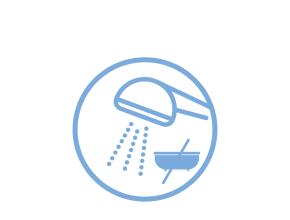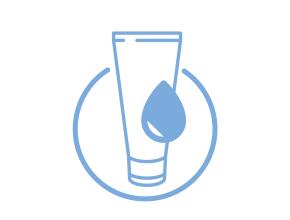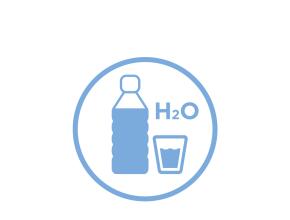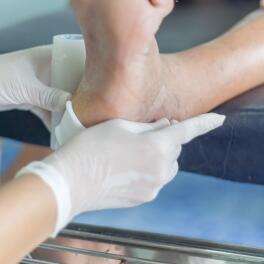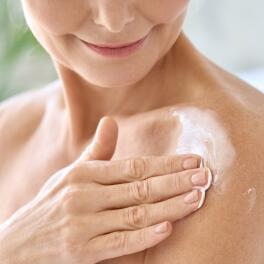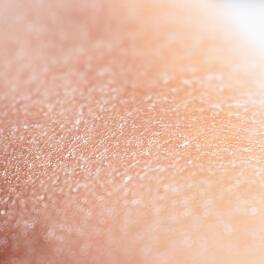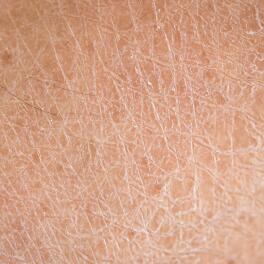How do you take care of your skin if you have senile xerosis?
Xerosis of the skin is a common condition in the elderly1, known as senile xerosis. It is characterised by dry, scaly skin. These symptoms can be accompanied by cracking and itching2. But what exactly is senile xerosis? What are the causes? How can it be prevented and its symptoms minimised?
- 55
of people over 65 are affected by senile xerosis
- 40
reduction in sebum production after 60
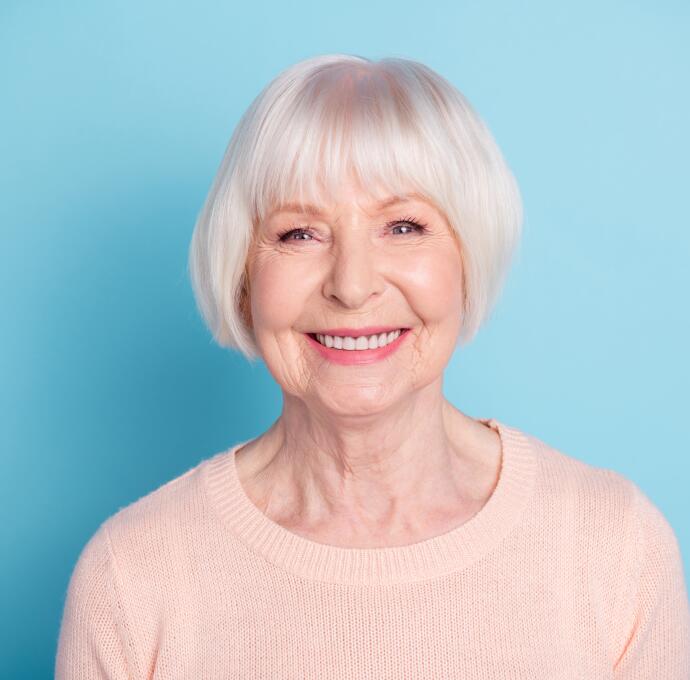
Summary
What is senile xerosis?
Senile xerosis is the medical term for dry skin in the elderly. It comes from the Greek "xeros" which means dry3. It is estimated that senile xerosis affects 55% of people over 654.
Senile xerosis is characterised by shedding (the skin cracks and peels) and roughness (the skin is rough, thicker). It is frequently associated with pruritus, i.e. itching. This pruritus frequently reduces the quality of life of people with senile xerosis5.
Senile xerosis occurs mainly on the arms, legs and lower back5.
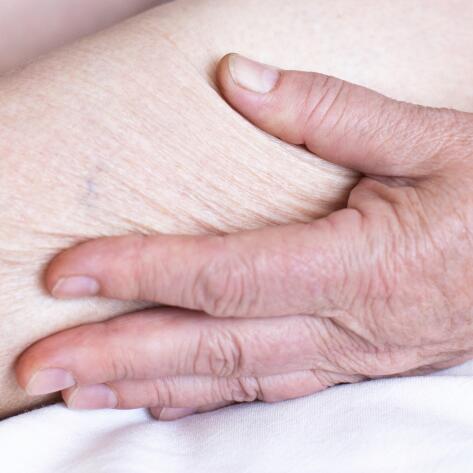
What causes senile xerosis?
Senile xerosis is caused by two types of factors:
Extrinsic or environmental factors6,7: irritants such as soap or cleaning products, rough materials such as wool, excessive use of heating or air conditioning, the climate: cold, dryness, excessive exposure to the sun, etc.
EXTRINSIC FACTORS IN XEROSIS
Climate
Rough materials

Intrinsic or physiological factors8: The skin is covered by a protective film called the hydrolipidic film, which acts as a skin barrier. It contains fatty substances, sebum and water. Sebum's role is to limit the evaporation of thewater contained in the dermis and to protect the skin from external aggressors. Sebum is produced by the sebaceous glands located in the epidermis and the water contained in the hydrolipidic film comes from the sweat produced by the sweat glands. Production from these glands, both sweat and sebaceous, decreases with age, particularly in women after menopause. It is estimated that the sebaceous glands of women aged 60 have lost 40% of their activity. The water in the dermis evaporates more easily and the skin is less well-hydrated. It becomes drier, rougher.
A history of atopy and, in particular, atopic dermatitis increases the risk of xerosis in the elderly4,9. Other conditions such as psoriasis, hypothyroidism or certain lymphomas can also cause senile xerosis7.
How can we prevent senile xerosis and reduce the symptoms and discomfort?
To limit the symptoms and discomfort associated with senile xerosis, skin care should be adapted to suit the physiological characteristics of the skin10 :
- Use specific cleansing products containing skin-nourishing ingredients
- Avoid baths or showers that are too long and/or too hot
- Apply an emollient daily, at least after every bath or shower. It can be applied several times a day to very dry skin. This will limit the reduction of the hydrolipidic film. A study showed the importance of using mild products for daily hygiene and combining them with the application of a glycerine and vaseline emollient or urea cream9,10.
Our tips for limiting the symptoms of senile xerosis
Use a soap-free cleansing product
Avoid bathing for too long
Apply an emollient daily
- Avoid using skin care products that contain alcohol, fragrance or parabens
- Opt for loose-fitting clothes made of natural, non-irritating fibres
- Drink enough during the day to ensure adequate hydration of the dermis
- Protect your skin from the sun by applying SPF 50+ sun protection and trying to stay in the shade. Avoid going out between 12 and 4 pm, when the sun is at its highest
For severe forms and intense itching, drug treatments can be prescribed by a doctor.
Additional tips to limit the symptoms of senile xerosis
Opt for non-irritating clothing
Drink enough during the day
Protect your skin from the sun
Are you familiar with the effectiveness of DEXERYL Emollient Cream in treating your condition?
DEXERYL Emollient Cream provides patients with proven clinical studies.
DEXERYL Emollient Cream: the partner for people suffering from dry skin
The first thing to do to prevent senile xerosis is to apply a suitable emollient daily, combined with a gentle hygiene routine.
Dexeryl supports you with emollient skin care and cleansers specially formulated for sensitive and dry skin.

DEXERYL Emollient Cream
DEXERYL Emollient Cream can be used to protect the skin and treat the signs and symptoms of dry skin, particularly in the context of senile xerosis.

Dexeryl supports you each day
Source:
- A Cristaudo, L Francesconi et al: Efficacy of an emollient dermoprotective cream in the treatment of elderly skin affected by xerosis; G Ital Dermatol Venereol. 2015; 150: 297-302
- S Lueangarun, B Soktepy et al: Efficacy of anti-inflammatory moisturizer vs hydrophilic cream in elderly patients with moderate to severe xerosis: A split site, triple-blinded, randomized, controlled trial; Journal of Cosmetic Dermatology, 19(6), 14321438.
- https://www.healthline.com/health/xerosis
- C Paul, S Maumus-Robert et al.: Prevalence and risk factors for xerosis in the elderly: a cross-sectional epidemiological study in primary care. Dermatology. 2011; 223(3): 260-5.
- R Izumi, O Negi, et al: Efficacy of an emollient containing diethylene glycol/dilinoleic acid copolymer for the treatment of dry skin and pruritus in patients with senile xerosis; Journal of Cosmetic Dermatology, 16(4), e37e41
- E Foy White-Chu, R Madhuri: Dry skin in the elderly: complexities of a common problem; Clin Dermatol 2011 Jan-Feb; 29(1): 37-42
- KR Cohen, J Frank, et al. : Pruritus in the elderly: clinical approaches to the improvement of quality of life. P T Peer-Rev J Formul Manag 2012; 37: 227-39
- https://www.vidal.fr/maladies/peau-cheveux-ongles/secheresse-peau-ongles/causes.html
- J Brooks, F Cowdell: Skin cleansing and emolliating for older people: A quasi-experimental pilot study; Int J Older People Nurs. 2017 September
- https://www.samitivejhospitals.com/article/detail/dry-skin-in-elderly





